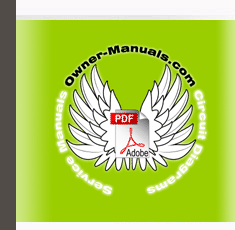Nie masz w koszyku żadnych produktów
|
|
|
Kategorie
|
|
Informacje
|
|
Polecamy
|
|
|
 |
|
|
Dla tego produktu nie napisano jeszcze recenzji!
 ;
jedyne do czego mogę mieć zastrzeżenie to jakość zdjęć zawartych w przesłanej instrukcji serwisowej ponieważ są fatalnej jakości, praktycznie nieczytelne. tak poza tym jestem zadowolony to jest to czego szukałem.
 ;
Wszystko w porządku.
Instrukcja czytelna i kompletna.
Dziękuję.
all right!
thank you.
 ;
Bardzo dobra instrukcja. Zawiera wszystko co potrzeba, polecam!
 ;
Instrukcja jest OK. Schematy czytelne, opisane niektóre procedury.
 ;
Instrukcja bardzo czytelna. zawiera co potrzeba. Polecam
FL8550
Signal to Noise Ratio 1. Set the mode of the filter to � S/N� mode
2. 3. 4. 5. 6.
Play track 2 of the test disc The unit of the audio analyzer is set to dB mode Press the S/N key on the control panel of the audio analyzer Play track 7 Measure the data of S/N ratio
Dynamic Range 1. Set the mode of the filter to � D-Range� mode
2. 3. 4. 5.
Set the audio analyzer to � DIST� Mode Set the unit of the audio analyzer to � dB� mode Play track 17of the test disc The dynamic range should be |A| + 60dB
Channel Separation 1. Set the mode of the filter to � DIST/CH-SP� mode
2. Set the audio analyzer to � LEVEL� mode 3. Play the tracks 8, 9, 10 & 11 4. The measured results is the difference between L & R channel
De-emphasis 1. Press the � THRU� button of the CD filter
2. Play the track 2 of the test disc 3. Press the � Relative Level� and make it � ON� 4. Select the track 12 and 13 and measure the L & R channels value
26
|
|
 |
> |
|
|
Parse Time: 0.239 - Number of Queries: 100 - Query Time: 0.04
